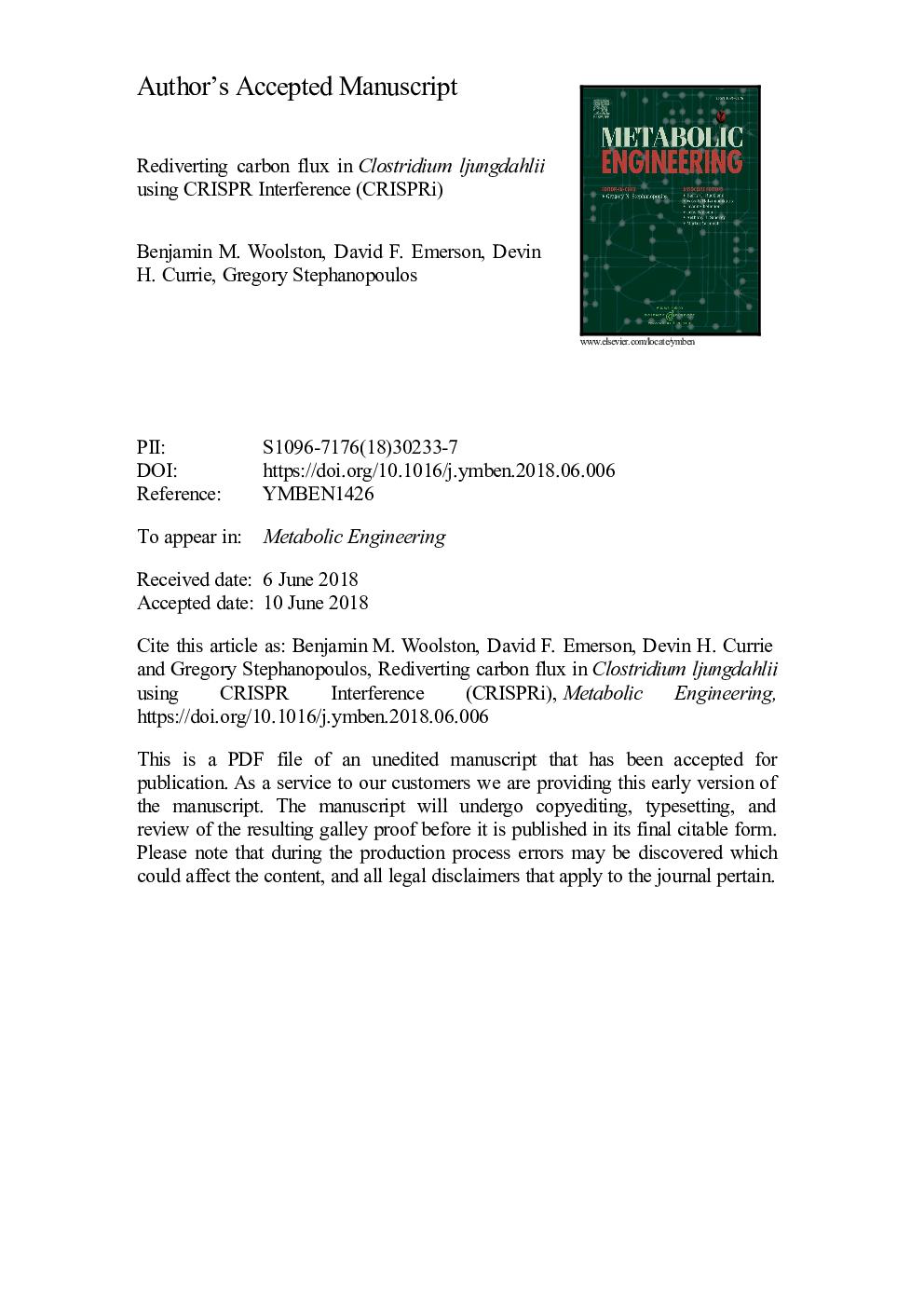| کد مقاله | کد نشریه | سال انتشار | مقاله انگلیسی | نسخه تمام متن |
|---|---|---|---|---|
| 6494053 | 1418331 | 2018 | 45 صفحه PDF | دانلود رایگان |
عنوان انگلیسی مقاله ISI
Rediverting carbon flux in Clostridium ljungdahlii using CRISPR interference (CRISPRi)
دانلود مقاله + سفارش ترجمه
دانلود مقاله ISI انگلیسی
رایگان برای ایرانیان
موضوعات مرتبط
مهندسی و علوم پایه
مهندسی شیمی
بیو مهندسی (مهندسی زیستی)
پیش نمایش صفحه اول مقاله

چکیده انگلیسی
Clostridium ljungdahlii has emerged as an attractive candidate for the bioconversion of synthesis gas (CO, CO2, H2) to a variety of fuels and chemicals through the Wood-Ljungdahl pathway. However, metabolic engineering and pathway elucidation in this microbe is limited by the lack of genetic tools to downregulate target genes. To overcome this obstacle, here we developed an inducible CRISPR interference (CRISPRi) system for C. ljungdahlii that enables efficient (> 94%) transcriptional repression of several target genes, both individually and in tandem. We then applied CRISPRi in a strain engineered for 3-hydroxybutyrate (3HB) production to examine targets for increasing carbon flux toward the desired product. Downregulating phosphotransacetylase (pta) with a single sgRNA led to a 97% decrease in enzyme activity and a 2.3-fold increase in titer during heterotrophic growth. However, acetate production still accounted for 40% of the carbon flux. Repression of aldehyde:ferredoxin oxidoreductase (aor2), another potential route for acetate production, led to a 5% reduction in acetate flux, whereas using an additional sgRNA targeted to pta reduced the enzyme activity to 0.7% of the wild-type level, and further reduced acetate production to 25% of the carbon flux with an accompanying increase in 3HB titer and yield. These results demonstrate the utility of CRISPRi for elucidating and controlling carbon flow in C. ljungdahlii.
ناشر
Database: Elsevier - ScienceDirect (ساینس دایرکت)
Journal: Metabolic Engineering - Volume 48, July 2018, Pages 243-253
Journal: Metabolic Engineering - Volume 48, July 2018, Pages 243-253
نویسندگان
Benjamin M. Woolston, David F. Emerson, Devin H. Currie, Gregory Stephanopoulos,